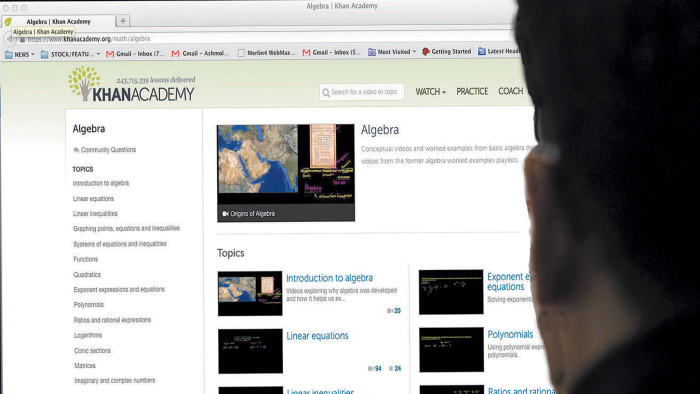Massive open online courses: Time and a little money are a worthy investment

Simply sign up to the Business education myFT Digest -- delivered directly to your inbox.
Many in the world of higher education suspect they are witnessing the beginning of a revolution. The agent provocateur is the Mooc (massive open online course) and, if some pundits are proved correct, it could change the way all students experience learning – including those at business schools – and put a few professors out of a job.
Why the nerves? Moocs are free, millions have signed up and no one knows what the scene will look like after the dust has settled. Anant Agarwal, professor of electrical engineering and computer science at MIT and president of edX, a Mooc provider, thinks the result will be positive.
“I view online learning as a rising tide that will lift all boats. It will not only increase access, it will also improve the quality of education at all our universities.”
At the moment there are three big university level Mooc providers – all based in the US and all launched within months of each other last year: Udacity, Coursera, and edX. Futurelearn, a British Mooc project being led by the Open University, the UK distance learning institution, will begin offering courses later this year.
Predating them is the Khan Academy. It began in the US in 2008, offering courses mainly for secondary school students, although some reach early college level. It also offers GMAT (Graduate Management Admissions Test) tuition.
The Khan Academy laid the groundwork for the higher education providers that emulated it. It also gives an idea of Moocs’ potential. Khan boasts 5.5m unique users a month who complete 2m exercises a day. In all, there have been 235m videos viewed. This has all been achieved with a staff of only 37.
Coursera, the largest of the university-level Mooc platforms is reporting some phenomenal numbers. Andrew Ng, co-founder of Coursera and professor of computer science at Stanford University, says between launching last April and August, it signed up its first 1m users. It reached the 2m mark in December and claimed more than 2.7m users by the end of February.
“We have had a slight acceleration in growth,” says Prof Ng, modestly.
Coursera’s early lead in terms of users may be because of its large number of courses. It offers 325 courses from participating institutions, of which 29 courses are in business and management. Some have not yet run and some are already repeating. One of these, Introduction to Finance, has been Coursera’s second-most successful – 119,658 students signed up for the first one.
The Mooc platforms have different approaches. Coursera and edX – which plans to launch business-focused courses this year – have set start and finish dates and typically last from six to 10 weeks. Information is imparted largely by video lecture. Online forums take the place of seminars.
At Udacity – with just one business-related course – once a course is uploaded it stays open and students can work at their own speed. Assessment, testing and certification can differ quite significantly. Essay-type assignments pose problems because of the huge student numbers. At Coursera peer assessment is being used for these tasks. Students are “taught” to mark the work of others by being given marking criteria and then marking previously graded work.
At Udacity all assessment is by computer and at edX by a combination of machine grading, peer grading and self grading.
Testing and certification also differ. Although all courses continue to be available for free, all three institutions have begun to offer different levels of testing and certification on some courses for modest fees ranging between $30 and $190.
——————————————-
Course: How to build a start-up
Mooc platform: Udacity
Tutor: Steve Blank, Silicon Valley entrepreneur and author of several books
What you learn: Key tools and steps to build a successful start-up. Ideally, students will join the class with at least a rough idea of the business model of the start-up they will work on. They shall learn how to identify and engage customers and to gather, evaluate and use feedback to make their business model stronger
Start date: It does not have one – students can start the course and finish it in their own time.
Course length: Students study at their own pace
Costs: Free, with possible future option of paid-for certification
Assessment: All Udacity courses are currently assessed by computer
Certification: After completion of the course students receive a certificate of completion. However, Udacity also offers an option to complete a proctored (externally invigilated) exam for a fee of $150 on some courses
Comments